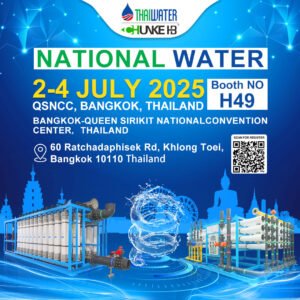Reverse Osmosis & Water Treatment in Iran
CHUNKE projects of Reverse Osmosis Water Treatment in Iran including different types of water treatment systems.
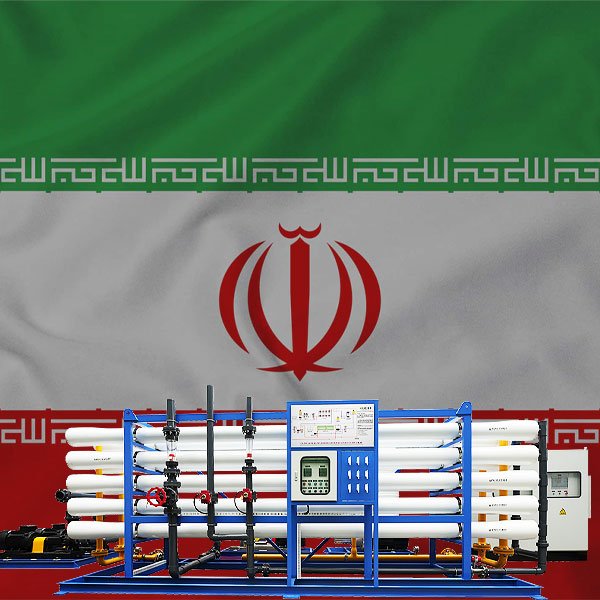
Iran, also known as Persia and officially as the Islamic Republic of Iran, is a country in West Asia. It is bordered by Iraq and Turkey to the west, Azerbaijan and Armenia to the northwest. And it is bordered the Caspian Sea and Turkmenistan to the north, Afghanistan and Pakistan to the east, and the Gulf of Oman and the Persian Gulf to the south. It covers an area of 1.64 million square kilometres (0.63 million square miles). So, it is making Iran the 17th-largest country. The population of Iran is about 86.8 million. Iran is the 17th-most populous country, and the second largest in the Middle East. Its capital and largest city is Tehran, accordingly.
Total Renewable Water Resources per Capita in Iran
In 2020, renewable water resources per capita for Iran was 1,631.6 cubic meters per year. Renewable water resources per capita of Iran fell gradually from 4,680.2 cubic meters per year in 1971 to 1,631.6 cubic meters per year in 2020.
Renewable surface water: 105.8 billion cubic meters per year
Renewable groundwater: 49.3 billion cubic meters per year
Renewable water resources: 137 billion cubic meters per year
Dependency ratio: 6.8 %
Meanwhile, CHUNKE provides wide range of filtration and economical solutions based on the Iran’s water resources. So, our water treatment in Iran becomes more popular accordingly.
- Surface water is water from river, lake which can be treated using different methods, such as Ultrafiltration Systems, Brackish Water RO accordingly.
- Desalination can be used for water from ocean, or sea source, which can be treated using Sea Water Reverse Osmosis Systems; Desalination Systems
- Ground Water or brackish water is from water located in the pore space of soil and rock “Borehole well”, which can be treated using Reverse Osmosis Systems, Borehole Water Filtration Systems, Well Water Filtration Systems, Chemical Dosing, UV Water Sterilizer accordingly.
- Government water supply, which could have high level of hardness or high level of chlorine, can be treated with Water Softener System, Media Water Filters.
CHUNKE Projects of Water Treatment in Iran
Meanwhile, CHUNKE designs and produces water treatment systems that meet the World Health Organization requirements. So, our water treatment in Iran is suitable for drinking.
CHUNKE has over 15 years of experience as a global provider of B2B water treatment solutions for a variety of applications and industries. Hence, we offer a large selection of all types of reverse osmosis, ultrafiltration, electrodeionization. And also, water treatment systems to meet your industrial needs accordingly. So, CHUNKE’s extensive global experience in engineering. And manufacturing allows us to pre-engineer and customize water treatment and reverse osmosis systems to meet a wide range of customer requirements and specifications.
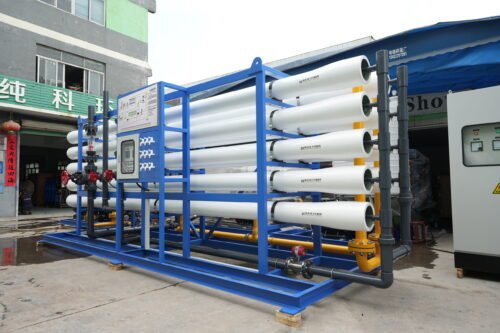
36TPH Sea Water Desalination Plant for Irrigation
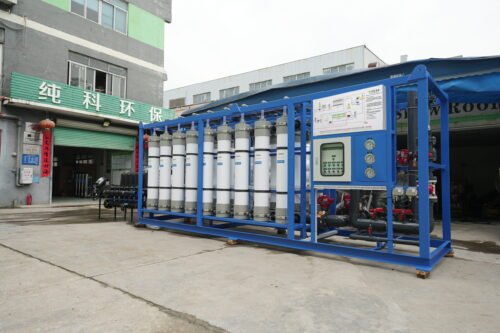
90TPH Ultrafiltration System for Hotel
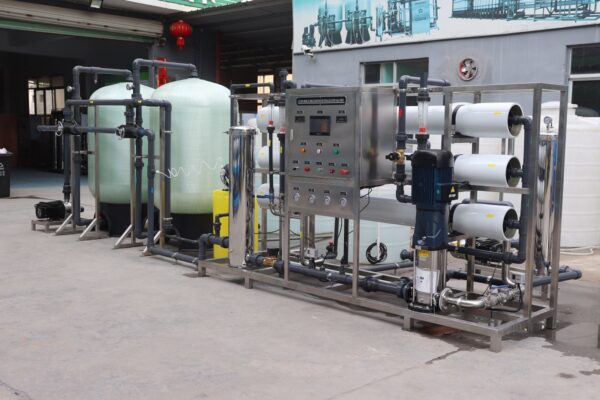
6000LPH Reverse Osmosis System for Drinking
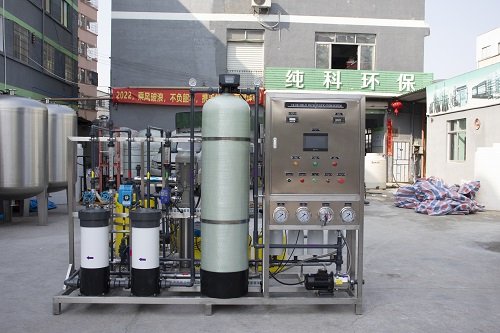
500LPH RO Sea Water Desalination for Irrigation
Water Treatment in Iran: Addressing the Water Scarcity Challenge
Iran, a country with a rich history and diverse landscapes, is facing a significant challenge: water scarcity. With its arid and semi-arid climate, limited rainfall, and depleting groundwater reserves, Iran has been grappling with water shortages for decades. The growing population, industrial development, and agricultural demands have put immense pressure on the already limited water resources.
In response to these challenges, Iran has been actively investing in water treatment technologies. It is with a particular focus on reverse osmosis systems. Reverse osmosis has emerged as a leading solution in the field of water treatment, offering efficient and effective methods to purify water for various applications. This article explores the state of water treatment in Iran, the role of reverse osmosis, and the efforts being made to ensure access to clean and safe water for all.
Water Resources in Iran
Iran’s water resources are characterized by several large rivers, with the Karun River being the only navigable one. However, most rivers in Iran are steep and irregular, limiting their usability. The country’s average annual precipitation is estimated at 228mm, varying across different regions. The distribution of precipitation is highly variable, with some coastal areas receiving more than 1,500mm, while parts of the central water basin receive as little as 50mm.
Of the average annual rainfall volume, approximately 68% evaporates before reaching the rivers. The total long-term annual renewable water resources in Iran are estimated at 120BCM (billion cubic meters), with about 78BCM contributing to surface runoff. Groundwater recharge accounts for approximately 45BCM per annum, with 26% being replenished through qanats (underground water supply systems) and springs, and 74% through wells.
The Challenge of Water Scarcity
Water scarcity is a pressing issue in Iran, with more than 500 cities facing drinking water shortages. The depletion of groundwater reserves, coupled with a drastic reduction in precipitation and rising temperatures, has exacerbated the problem. In mid-May, Iran’s Energy Minister issued warnings of possible water supply cuts and rationing in the summer, urging the public to reduce consumption.
To address this challenge, Iran has been investing in various water treatment methods, including desalination and the use of reverse osmosis systems. These technologies offer the potential to utilize different water sources, such as seawater and wastewater, to meet the growing demand for freshwater.
Reverse Osmosis: A Solution for Water Treatment
Reverse osmosis has gained significant prominence as a water treatment technology, thanks to its efficiency and effectiveness in removing contaminants. So, unlike traditional filtration methods, which rely on screens or filters to remove particles, reverse osmosis utilizes a semipermeable membrane and the principles of crossflow filtration.
Hence, the reverse osmosis process involves applying pressure to force water through the membrane, leaving behind contaminants. So, this technology is highly effective in removing a wide range of impurities, including endotoxins, insecticides, herbicides, antibiotics, nitrates, sugars, soluble salts, and metal ions. Hence, it provides the finest level of filtration, making it an ideal choice for water treatment applications.
Industrial Applications of Reverse Osmosis in Iran
In the industrial sector, reverse osmosis systems have found widespread applications in water treatment processes. Meanwhile, companies in Iran have been actively implementing reverse osmosis technology to overcome water scarcity and ensure the availability of high-quality water for their operations.
One prominent company in the field of industrial water treatment is Guangzhou Chunke Environmental Technology Co.Ltd. With over 15 years of experience in the sector. This Chinese company, based in Guangzhou, offers innovative solutions for industrial wastewater treatment. They are conscious of the impact of industrial water and wastewater on the environment and provide advanced reverse osmosis systems to effectively treat and purify water, accordingly.
The RO technology has numerous applications across various sectors, including:
- Drinking water production
- Boiler feed water pre-treatment
- Food and beverage processing
- Seawater desalination
- Municipal water supply
- Pharmaceuticals
- Bio-technology
- Hotels and resorts
- Medical and healthcare
Desalination: Tapping into the Potential of Seawater
Desalination has emerged as a viable solution to overcome water scarcity in coastal areas of Iran. By harnessing the power of reverse osmosis, desalination plants can convert seawater into fresh water. It is making it suitable for various applications. So, Iran has been actively investing in desalination projects, with several plants already operational across the country.
One significant desalination plant in Iran is located in Bandar Abbas. This plant, using reverse osmosis technology. It has a production capacity of 20,000 m3/day of fresh water. It started operating in December 2018 and was funded by the private sector. Meanwhile, plans are underway to further expand its capacity to 100,000 m3/day.
The Iranian government has also announced plans to install additional desalination plants in various regions. It will potentially serve 45 million people in 17 provinces, accordingly. These plants are expected to be powered, at least partially, by a small nuclear power plant. It is highlighting Iran’s commitment to exploring sustainable and efficient ways to meet water demands.
Ensuring Water Quality: Wastewater Reuse and Treatment
In addition to desalination and reverse osmosis, Iran has been focusing on wastewater treatment and reuse to ensure water quality and address water scarcity. Although the reuse of treated wastewater is not widely applied in the urban sector due to cultural reasons. So, municipalities have started utilizing treated wastewater for green development and maintenance.
Efforts are being made to improve wastewater treatment facilities. And it prevents the discharge of untreated wastewater into surface and groundwater resources, accordingly. So, the treatment of wastewater plays a crucial role in reducing pollution and preserving the available freshwater resources.
Water treatment in Iran is a critical and ongoing challenge given the country’s water scarcity and growing population. Hence, reverse osmosis technology has emerged as a promising solution, providing efficient and effective methods to purify water for various applications. Desalination plants and wastewater treatment facilities are being implemented to overcome water shortages and ensure access to clean and safe water, accordingly.
Companies like Guangzhou CHUNKE Environmental Technology Co.Ltd., C&G Depurazione Industriale srl, LIAN TADBIR Engineering Company, and KAMPS are at the forefront of water treatment in Iran. Hence, they are offering advanced reverse osmosis systems and innovative solutions to industries. So, these efforts, combined with the government’s plans to install additional desalination plants and improve wastewater treatment, reflect Iran’s commitment to addressing the water scarcity challenge.
Chunke Water Treatment‘s expertise in producing high-quality reverse osmosis systems has contributed to improving water treatment capabilities in Iran. So, their reliable and efficient RO plants have been implemented in various projects across the country, ensuring access to clean and safe drinking water.

